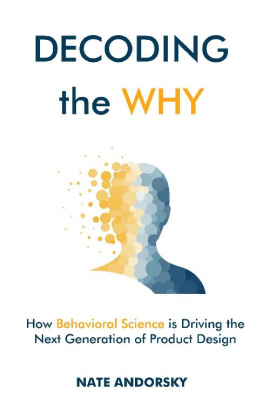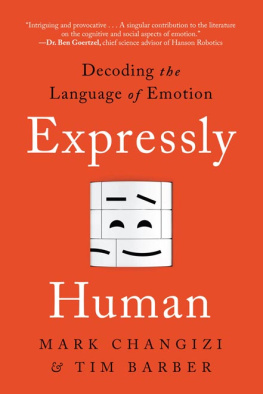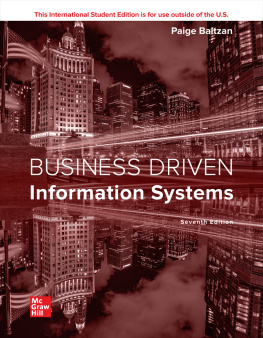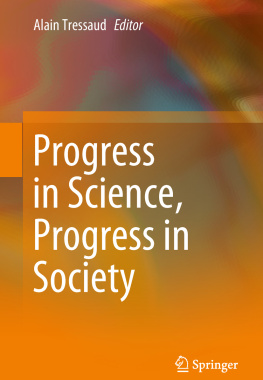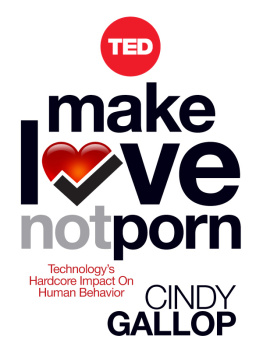Understanding features built into a product is helpful, but without an understanding of why, much becomes lost in translation.
Grasping the psychological underpinnings of why a feature was built is where the learning happens. This understanding allows you to understand the psychology under the hood, enabling you to extrapolate and apply psychological concepts in various contexts.
Without this understanding, you fall into the bad habit of duplicating innovative features with no rationale for doing so. You see a feature that works in one context, copy and paste it wherever youd like, and then wonder why you dont see the same effectiveness.
Terms You May Not Be Familiar With
If you work in the technology space, youll be familiar with the terms below. However, if you are unfamiliar with product design, Ive defined commonly used words in this book for your reference below:
Producta consumer-facing software product or website. A product could be a mobile app, a web application, or a website. Some examples are Acorns, Airbnb, Facebook, Twitter, etc.
Product Designthe look, feel, and experience of a product (referenced above), which could range from aesthetics to choices a designer has made for how a user navigates through a product.
User Experiencethe experience a user has when using a product such as what they may be feeling or thinking, or how hard or easy the product is to use.
Interventionrefers to a change made to a product to test the effectiveness of a behavioral science theory. For example, to show a user how much money they were spending daily, the behavioral scientist created a graph that the user would see when using the app. In this case, the intervention is the graph. Intervention is a fancy term for a change.
Useranyone who uses a product as defined above.
Context Matters
The examples in this book provide insight into how various theories integrate into product design. The application of these theories may seem obvious after the fact, but the road that led to those conclusions was often not. Behind every successful application of behavioral science, substantial testing of multiple approaches failed before discovering a strategy that worked.
This book is intended to give you a baseline understanding of how behavioral science integrates into product design. Still, please know that to grasp the material, youll need to put these ideas into practice.
The field of study is contextual, and small changes to an environment can change the effect of a theory or an approach. Behavioral science and its applications are not one size fits all. Simply because a theory works well in this book does not mean it will work the same way when leveraged in your product. However, this should not discourage you from integrating what you learn in this book. I cannot stress enough that it is essential to TEST. TEST. TEST. Do not assume that because a strategy learned in this book worked, it will work in your specific use case.
Just Get Started
Go ahead and dig in. Start anywhere. Well, just not at the end. The best way to learn this material is to get your hands dirty. Take these concepts and implement them today.
It is okay to jump around.
Even though most of the chapters reference products and theories from previous chapters, each chapter can stand on its own. However, if you do jump around, I recommend reading chapter 1, as it provides a foundation for everything shared in the book. Without this foundation, you may get lost.
Share This Book
Give it to friends, siblings, mothers, brothers, aunts, dogs, cats, or even a gerbil. I am passionate about behavioral science, and I am a true believer that this is the next generation of product design. The more people are exposed to this approach, the better. Set a goal to lend it to at least one friend after you finish it.
Reach Out
I am an open book and love to chat about behavioral science and technology. To connect with me, feel free to ping me on LinkedIn (search Nate Andorsky), email me at .
Part I:
THE NEW ERA OF PRODUCT DESIGN
Chapter 1:
The Next Product Revolution Will Be Psychological

Imagine youre the CEO of a homeowners and renters insurance company. Youve just left the annual board meeting with marching orders: reduce fraudulent claims by 50 percent, or find a new job come next year. The board is concerned; fraudulent claims are costing the company millions of dollars every year. To drastically reduce fraudulent claims, theyre suggesting an overhaul of the companys fraud department.

